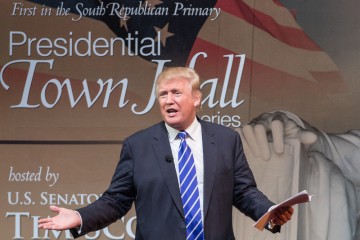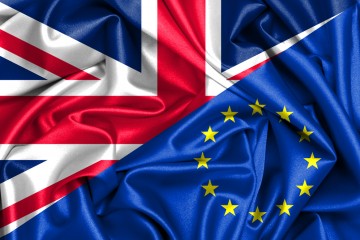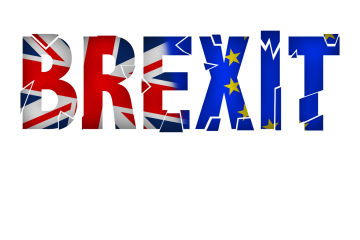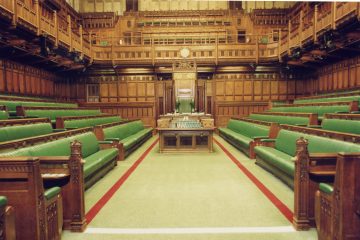
THE NEW “NEW RIGHT” – TRUMP’S POLITICAL EARTHQUAKE
Four decades ago the concurrent Thatcher and Reagan governments heralded the arrival of the “New Right” political agenda, which prioritised market forces over the primacy of “the state” in their respective countries. New Right policies followed in the 1980s, including reducing income and corporate taxes, deregulating labour and financial markets, and the promotion of market mechanisms of consumer choice into public sector services such as health and schools. “Market over state” was the mantra of the New Right but as many commentators noted, making markets requires state action (not least in public order maintenance), resulting in a redeployment of state power rather than its diminishment. Having seized power through the electoral college used to elect the President of the United …

Americans Love Their General
In wake of the US Inauguration , we can look to a valuable insight provided by the great English liberal John Stuart Mill more than a century ago: everyone loves executive power—when his or her party wins the election. Representative government started to gain traction and popularity in the Western world after the democratic Revolutions of 1848. John Stuart Mill—a pioneer of Classical Liberalism—was one of its strongest advocates. Yet in Considerations on Representative Government, published in 1861, he also warned against a problem that could arise from such political arrangements. Specifically, the danger that people could begin to value their party holding power over freedom itself. ‘Members of parties are willing to abdicate his personal freedom of action into …

Brexit arithmetics: A logical approach to predicting a Brexit deal
Do we know more now about the likely shape of the future Brexit deal? While Theresa May’s speech has provided some much-needed clarity on the British position, her uncompromising stance on the single market could make the deal yet more unpredictable. In the configuration sketched out today, the eventual result will depend even less on what Theresa May wants and even more on what the rest of the EU will give her. Commentators tend to argue that there are too many unknowns to figure out the positions and bottom lines of the 27. But nevertheless, the fundamentals are arguably simple enough to be described in three short equations, each of which gives us a clue about an eventual Deal UK (Duk). Equation 1: …

Trump’s “wall” vs. Clinton’s “glass ceiling”: symbolic campaigning in the US elections
When Hillary Clinton won the nomination as the Democratic Party’s presidential candidate in July 2016, she celebrated her victory speech with words that foreshadowed her campaign message: Tonight, we’ve reached a milestone in our nation’s march toward a more perfect union: the first time that a major party has nominated a woman for president…When any barrier falls in America, for anyone, it clears the way for everyone. When there are no ceilings, the sky’s the limit. In this exuberant declaration, Clinton introduced the image of the glass ceiling which spoke of a female president who would pave the way for not just her success but the success of all female Americans. This focus on women in America is closely linked …

Populism on the Rise? The Brexit Vote and Beyond
The outcome of the British referendum on European Union (EU) membership has sent shockwaves across the globe that are still reverberating. Politically, the two major political forces in Westminster, the Conservative and Labour parties, are in disarray about how to shape UK’s ongoing relationship with the EU once we leave. Prime Minister Theresa May faces the daunting task of organising the British exit from the EU whilst keeping her party and country together. There are question marks over not only Britain’s new relationship with the EU, but also our partners within the British Union. Hot on the heels of the Brexit vote came the election of Donald Trump as president of the United States of America. This has been widely …

Fake News? The blame-game in a post-Trump world
Donald Trump’s victory came as a surprise and/or shock to most pollsters, journalists, scientists, and citizens all over the world. And ever since Trump became the president-elect one question seems to be on many people’s minds: ‘who (or what) is to blame?’ The answers to this question ranges from the electoral system to international influence but one particular scapegoat is more prominent than others: the Internet. Indeed, not short after Trump’s victory Buzzfeed had identified the first villain: fake news. In their analysis they suggested ‘that top fake election news stories generated more total engagement on Facebook than top election stories’ from other serious outlets. The threat of fake news was born. And other mass media outlets followed. We have probably all …

Will Congress be able to hold President Trump in check?
Donald Trump will become the 45th President of the United States in January, but will he actually be able to carry out his agenda? Nigel Bowles writes that he will largely be able to. In the areas of trade, security, taxation and judicial appointments Congress will struggle to constrain him under current law and politics. Changing immigration law and reforming the Affordable Care Act are likely to prove more challenging. Nonetheless, during the first year of the Trump presidency American politics is likely to give the appearance of being what it only rarely is: a presidential system. For better or for worse, President Trump really will be in charge. The United States constitution is Madisonian in design and spirit. Separation of powers and …

The Evolution of Legislation: a Bioinformatics Approach
About thirty major pieces of government legislation are produced annually in the UK. As there are five main opportunities to amend each bill (two stages in the Commons and three in the Lords) and bills may undergo hundreds, even thousands, of amendments, comprehensive quantitative analysis of legislative changes is almost impossible by manual methods. We used insights from bioinformatics to develop a semi-automatic procedure to map the changes in successive versions the text of a bill as it passes through parliament. This novel tool for scholars of the parliamentary process could be used, for example, to compare amendment patterns over time, between different topics or governments, and between legislatures. Parliamentary amendments A major role of parliament is to scrutinize and amend …









